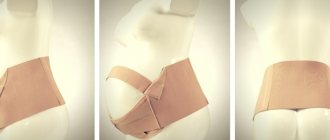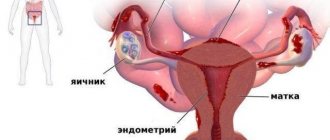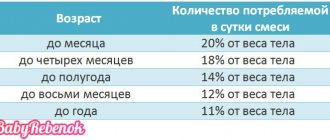06/11/2021 Reading time: 5 min 4764 0
Less than half of babies in Russia are fed breast milk before the age of six months. Only a third of children receive it per year. These are the data of the Federal State Statistics Service.
Meanwhile, a complete replacement for breast milk has not yet been invented, and it is almost always possible to establish lactation if the mother and newborn do not have serious illnesses.
It is important!
Even after a caesarean section, which in practice in 70% of cases leads to the introduction of supplemental feeding with formula already in the maternity hospital, you can successfully start breastfeeding and continue it for as long as the young mother and her baby need it.
Is it possible to breastfeed after a cesarean section?
There are no restrictions on breastfeeding after a caesarean section. If the operation took place without complications and with standard medications, then the baby can be delivered immediately after the woman recovers from anesthesia. International standards recommend doing this within an hour after surgery.
Warning! This photo contains information not intended for viewing by persons under the age of 18!
If birth was preceded by natural labor contractions, then milk should begin to appear within a few hours after birth. In this case, there should be a close person next to the woman in labor who will help during the feeding process. Attachment to the breast must be carried out at least 8-10 times a day until its stable production by the mammary glands.
If the cesarean section was planned and was not preceded by prenatal contractions, then milk begins to be produced 3-7 days after the operation. In such cases, feeding with artificial formula cannot be avoided. But even with a temporary absence of milk, the baby must be constantly attached to the breast. This will stimulate lactation and develop the correct reflexes in the baby.
Question to the expert
I will have a Caesarean section with epidural anesthesia. Tell me, how long after a cesarean section can you feed your baby breast milk? Will it be affected by the medications I have in my blood?
You can feed your baby an hour after birth, if your condition and the baby allow it. Children often fall asleep after a cesarean section, so you can put your baby to the breast for the first time after sleep. If you take painkillers, ask your doctor about your feeding regimen.
Why does a caesarean section negatively affect lactation?
A caesarean section is not a reason to give up breastfeeding, but it is objectively more difficult for mothers after this operation to establish lactation than for women who gave birth naturally.
- The body of the expectant mother prepares for feeding the baby from the first days of pregnancy: the structure and size of the breasts change, and in the second trimester the production of colostrum begins. Childbirth is the logical conclusion of this preparation. When a baby is born by caesarean section, the lactation mechanism starts late, as its natural hormonal settings are disrupted.
- In a newborn after a cesarean section, the sucking reflex may be weak at first, because the child did not pass through the birth canal and did not have time to adapt to the new conditions that suddenly appeared.
- The first breastfeeding is possible in the first minutes after a cesarean section, only if the operation was planned and performed under epidural anesthesia. If a woman in labor needs an emergency CS, it can be done under general anesthesia. In this case, the first feeding can take place only a day after the operation. During this time, the baby will already be fed with formula and it will be much more difficult to successfully establish lactation.
- After a caesarean section, a woman may be given antibiotics. As a rule, doctors prescribe medications that are compatible with breastfeeding, but in case of complications, stronger medications are sometimes required. Then the mother will have to regularly express milk to maintain lactation until the end of the course of treatment. However, it is not a fact that the baby will prefer the breast to the now familiar bottle with formula.
- After surgery, a young mother may have difficulty recovering from anesthesia and experience weakness if there was a large loss of blood. A painful stitch will make it difficult to find a comfortable position for feeding. In such a state, it takes a lot of determination to feed on demand, despite all the difficulties.
Despite the fact that a caesarean section creates additional difficulties in organizing breastfeeding, the mother can and should try to cope with them. This will help her preserve her own health and protect her baby.
Why is it worth fighting for the opportunity to breastfeed?
- Breastfeeding reduces the risk of sudden infant death syndrome and strengthens the baby's immunity not only while he receives breast milk, but also for many years after.
- When breastfeeding, a child develops a correct bite, develops intelligence better, and reduces the risk of obesity.
- Long-term breastfeeding protects mothers from ovarian and breast cancer and reduces the risk of developing type 2 diabetes.
- Breast milk is unique in its composition: it changes throughout the day and the first year of life, adapting to the needs of a particular child.
Nutrition after caesarean section for a nursing mother
A woman’s diet after cesarean section has significant features only for the first three days. After this, nutrition should become complete to ensure sufficient milk production and normal tissue restoration after surgery.
You should not eat food on the first day after a cesarean section. It is allowed to drink still water, mineral water or fruit juices diluted 3-4 times. Excessive drinking can cause the breasts to become very engorged and the swelling of the postoperative suture to increase.
Stimulation of the intestines is mandatory so that the woman does not have to strain when visiting the toilet. To do this, they give injections of Proserin, and after half an hour - an enema. Stimulation of the intestines also prevents the formation of adhesions.
Question to the expert
What can a nursing mother eat after a cesarean section in the first days and first week? Otherwise, you need to tell your relatives what to bring to the maternity hospital)
On the first day, you can only drink still water or diluted juices. You can read about the set of products on the second and third days in the above article. From the fourth day, a woman can begin to eat regular food recommended for nursing mothers. However, in the first month, nutrition should still be gentle on the gastrointestinal tract
From the second day, it is allowed to consume unleavened broths, yoghurts, vegetable and chicken purees. You can drink tea, various compotes, juices, fruit drinks. Appropriate baby food may be consumed. Food should be divided into 7-8 meals so as not to burden the stomach.
From the third day, a woman can eat steamed cutlets with dietary meat, light soups, yoghurts, cereals, baked fruits and boiled vegetables. You can drink almost everything that is allowed to any nursing mother.
Pashkova Alla Valerievna
Obstetrician-gynecologist, candidate of medical sciences.
Ask a Question
Further nutrition is carried out in a gentle manner in accordance with the general recommendations for food during breastfeeding.
What can you eat after surgery?
Like any abdominal surgery, a cesarean section is performed under general or epidural anesthesia. The speed of recovery after anesthesia depends on many factors. First of all, it depends on the type of medicine chosen, the correctness of the dose calculation by the anesthesiologist and the characteristics of the patient’s body.
On the first day after this operation, you can drink still water; you can acidify it a little with lemon juice. All nutrients are still supplied to the woman’s blood vessels using IV drips.
The patient is transferred from the intensive care ward to the postpartum ward on the second day after cesarean section. What can you eat? As after another abdominal operation, broths, unsweetened fruit drinks, tea, ground boiled meat, low-fat cottage cheese, yogurt without fruit fillers, and pureed vegetable purees are allowed. Dense food is not recommended, as it is still necessary to spare the digestive organs.
After three days and thereafter, the normal diet is gradually introduced, taking into account the diet for a breastfeeding mother. Pediatric doctors in the maternity hospital will tell you what you can eat after a caesarean section for quality lactation. Milk porridges, vegetable side dishes and broths, fruit jelly, boiled meat and fish, and steamed cutlets are useful. It is necessary to exclude fried, fatty, flour, salty, sweet, carbonated drinks and other foods that are difficult for the body in the postoperative period. It is allowed to completely resume the usual menu after the first independent bowel movement, which, as a rule, should be 3-5 days after the operation.
What can a nursing mother eat in the first month after a cesarean section?
When a mother and child return home safely after a cesarean operation, the main thing is not to be tempted by the usual home-cooked food. In the first month, a nursing woman should monitor her diet and eat only recommended foods. These include:
- Milk, low-fat cheese, kefir, cottage cheese, butter.
- Vegetables, except for highly aromatic ones and legumes.
- Lean meats.
- Soft fruits, excluding citrus fruits.
- Vegetable oil.
- Eggs.
- Porridge, soup.
These products will not lead to a deterioration in the taste of milk and will ensure that it contains all the necessary substances. The following foods should be avoided:
- Natural honey.
- Canned food.
- Mayonnaise and other store-bought sauces.
- Marinades and salinities.
- Sausages and sausages.
- Fried, smoked, spicy.
- Chocolate.
Listed above are only those foods that are undesirable for a nursing mother to consume in the first month after a cesarean section. After this period, you can introduce such food into your diet in reasonable quantities. In addition to these products, there is a general list of foods not recommended for consumption during lactation.
Question to the expert
Two months after cesarean. I would like to get rid of my stomach and improve my digestion a little, because after giving birth I sometimes have constipation and have to take a laxative. May I know when can a nursing mother pump up her abs after a caesarean section?
You can actively pump up your abs no earlier than 4-6 months after giving birth. You should start with gymnastics with minimal amplitudes and effort. It is advisable to first go to the surgeon and have an ultrasound to confirm the good condition of the sutures.
Tips on how to establish breastfeeding after a caesarean section
- If you are having a planned cesarean section, talk to your doctor in advance and tell them that you would like to breastfeed. Discuss any issues that are causing you anxiety. The psychological attitude is no less important than the physical state, so work on it and get support.
- Before surgery, ask that your baby be placed directly on your chest while still on the operating table.
- Insist on staying in the room with the newborn, even if you are offered to rest alone and bring the baby for feeding. The baby will feel protected next to you, and you will be able to feed him on demand - then the milk will come faster and there will be more of it.
- Ask your postpartum midwife or children's nurse to show you how to properly latch your baby to the breast. The baby's mouth should be wide open, the lower lip should be turned out, the areola can only be visible above the upper lip, and below it should be completely hidden in the baby's mouth. If the baby takes the breast incorrectly, he may remain hungry, and it will be painful for you to feed, and cracked nipples may appear.
- Learn to express by hand and, if necessary, using a breast pump. It will help maintain lactation if you are unable to breastfeed at first while taking medications.
- Do not give your baby a pacifier or a bottle with a nipple at least in the first month after birth, until lactation is completely established. If necessary, drink the mixture or medicine from a spoon or syringe.
So, a caesarean section is not an obstacle to breastfeeding, although it will be a little more difficult to establish lactation. Considering how beneficial breastfeeding is for the mother, and breast milk is for the baby, you need to be determined to overcome difficulties. Successful breastfeeding after caesarean section will be helped by mother and baby staying together in the postpartum ward, feeding on demand, correct attachment technique and psychological support from both medical staff and loved ones.
(0 ratings; article rating 0)
Share Share Share
A nursing mother has little milk after a cesarean section - what to do?
Lucky mothers who have no problems with lactation after cesarean section. But what to do if the breasts do not fill out either on the 1st or 3rd day after surgery? Doctors recommend not waiting for problems and starting to stimulate milk production in the first hours after birth.
The following techniques are used for this:
- Every hour, and also after the baby wakes up, apply it to the nipple for 1-2 minutes. Even a child’s negative reaction to the lack of milk will be a good incentive to increase its production.
- Try to pump several times a day. This will irritate the areola receptors and create an imitation of sucking. A breast pump can also be used for this purpose.
- Stay in contact with your child as much as possible. It is advisable that his lips touch the mammary gland more often.
- Drink more fluids, including milk, but only 3-4 days after birth.
- Massage your nipples several times a day. This should be done gently, without strong pressure.
If a week after birth there are no signs of active lactation, then this is a reason to contact an antenatal clinic or volunteer breastfeeding specialists.
Question to the expert
A month has passed since the operation, everything is fine, but doctors prohibit bathing in the bathroom. Can you tell me when a nursing mother can take a bath after a caesarean section?
After cesarean section, it is recommended to take a full bath no earlier than 8 weeks after surgery. Until then, you can get by with a regular shower.
Third day after cesarean
On the third day the menu becomes even more extensive. Now it includes:
- steamed cutlets;
- liquid porridge with water;
- cheese without artificial additives;
- baked apple;
- baby puree;
- omelette from the oven.
All products are as neutral as possible and will not lead to intestinal problems or cause gas formation. Dishes should be at room temperature: neither hot nor cold. It is important to eat often, but not to overeat.
When can a nursing mother exercise after a caesarean section?
Women after cesarean simply cannot play sports. Most physical exercises are accompanied by tension in the abdominal muscles, which in the postoperative period leads to severe pain and the likelihood of suture dehiscence. Therefore, you should not engage in sports exercises after cesarean section for at least 2 months.
It is necessary to start physical activity with light gymnastics, yoga, Pilates, carefully monitoring the sensations in the lower abdomen and regularly inspecting the surgical suture. The first lessons should not last more than 10 minutes. If there are no negative consequences from the stress, your periods do not come, then you can increase their duration and intensity.
Going to the gym for full training is allowed only after examination by a surgeon. Typically, active loads on the abdominal muscles are allowed no earlier than six months after surgery.
Question to the expert
When can a nursing mother spin a hula hoop after a caesarean section? I would like to take care of myself a little, but I'm afraid. The child is already three months old.
I would not recommend starting physical activity with a hoop. 8 weeks after giving birth, you can do gymnastics, making circular movements of the entire torso and hips. Only after a few days, in the absence of pain and discomfort, can you proceed to using the hoop. But movements should be as smooth as possible.
Sports activities after cesarean section have a lot of positive aspects:
- Reduces back pain from carrying a child.
- The muscles of the uterus are strengthened, reducing the risk of problems during subsequent births.
- The breasts are tightened, reducing their sagging after the cessation of lactation.
- The stomach decreases.
- The fusion of the abdominal muscles is stimulated.
- The consequences of adhesions are reduced.
Pashkova Alla Valerievna
Obstetrician-gynecologist, candidate of medical sciences.
Ask a Question
There are no negative aspects to playing sports. The main thing is that the exercises do not cause pain and do not take up the mother’s time from the baby.
Breastfeeding after caesarean section: mission accomplished!
Of course, lactation after cesarean section has its own characteristics. But, if the mother is prepared for them in advance, she will be able to overcome temporary difficulties and establish breastfeeding for the baby.
Problem #1: early application
For the successful establishment of lactation, early latching of the baby to the breast plays an important role. In addition to the fact that the mother’s touch immediately after the birth of the baby, skin-to-skin contact can alleviate postpartum stress and facilitate the baby’s adaptation to a new world, early breastfeeding has a beneficial effect on the lactation process. Stimulation of the nipples causes a hormonal surge, which triggers the process of milk production.
During a natural birth, the baby's first breastfeeding should occur immediately after the baby is born or within the first 30 minutes after his birth. When the baby is born and makes its first cry, the doctor cuts the umbilical cord and places it on the mother's chest, helping him find and latch on to the nipple.
The possibility of early breastfeeding after a caesarean section depends on the type of anesthesia used and the well-being of the mother and child. With epidural anesthesia (an anesthetic is injected into the membranes of the spinal cord and the mother is conscious during the operation), the baby can be put to the breast immediately after birth without waiting for the end of the operation. During general anesthesia, when the mother is still under the influence of anesthesia and anesthetic after the birth of the baby, it is impossible to put the baby to the breast. The first breastfeeding after a cesarean section is most often carried out after the woman has recovered from anesthesia and been transferred to the postoperative ward, and often it can be postponed until the woman is transferred to the postpartum ward. It often happens that the baby is brought to his mother, but he refuses to suckle.
This is because the birth process itself is different for caesarean section babies. There is no phase of the baby passing through the birth canal, which prepares it for entering another environment. Caesarean babies require more time to adapt to new living conditions and overcome postpartum stress. Thus, babies born naturally “come to their senses” 15–30 minutes after birth, and babies after a cesarean section need 1.5–2 hours. And all this time the baby will behave sluggishly, not feeling the desire to attach to his mother’s breast.
As numerous studies show, Caesar calves begin to show sucking activity within the first six hours after birth. And it is during this time period that the baby must be put to the breast for the first time.
If the baby's sucking activity is low or absent, it is necessary to offer him the breast for every concern until he begins to suck actively.
Problem #2: Prescribing antibiotics after cesarean section
Another problem that a mother may face after a cesarean section is the prescription of antibiotics. This is done in order to prevent the development of infectious complications after surgery. Most often, the doctor chooses drugs that are compatible with breastfeeding. This means that these antibiotics either do not enter the milk at all, or enter in minimal quantities and cannot harm the baby.
Sometimes it happens that the mother’s condition after a cesarean section requires the prescription of stronger antibiotics that are incompatible with breastfeeding. In this case, doctors prohibit breastfeeding for the first 3–4 days. In this case, a woman must express breast milk to maintain lactation.
Problem No. 3: baby’s reluctance to latch on to the breast after bottle feeding
If the mother and baby were not together for the first few days, then, most likely, before meeting the mother’s breast, the baby was fed formula milk from a bottle. This can make it difficult for your baby to attach to the breast. The fact is that sucking on the breast and nipple on the bottle occurs in different ways with the participation of different muscles. When sucking a pacifier, the muscles of the cheeks are involved; when sucking the breast, the muscles of the tongue are involved. A child who gets used to sucking a pacifier tries to latch onto the breast in the same incorrect way. He experiences what is called “nipple confusion” and begins to worry and cry.
This problem can be solved by categorically refusing to use pacifiers and bottle nipples, and whenever the baby becomes restless, the mother offers him only the breast. At first, you need to help the baby and teach him to latch onto the breast correctly. Not only the nipple, but also the entire areola should enter his mouth. If the baby does not have alternative objects for sucking, sooner or later he will learn to properly take his mother’s breast and suck milk.
If the baby refuses to latch on to the breast for a long time and needs supplemental feeding, it is recommended to give expressed milk or formula to the baby from a spoon, cup or syringe (without a needle).
Problem #4: Choosing a nursing position after a cesarean section
After a cesarean section, due to pressure on the suture on the abdomen, feeding the baby while sitting in the most common “cradle” position may be difficult. In this situation, a nursing mother can use other positions, such as hand feeding or lying down feeding, in which she will not experience discomfort and pain in the area of the post-operative suture.
Feeding positions after caesarean section
Underhand position
In this position, the baby is located on the side of the mother, as if looking out from under the armpit. The mother supports the baby's head under the neck, his legs are behind the mother's back. The baby is turned with his tummy to his mother's side, his mouth is at the level of the nipple. To make feeding easier, you can place a pillow under the baby's head.
Lying down
In the “side lying” position, you can feed the baby from the lower or upper breast. In this position, mother and child lie on their sides, facing each other. Mom's head lies on the pillow, and her shoulders fall on the surface of the bed. The baby's head lies on the mother's hand, which allows the baby's mouth to be at the level of the nipple. The mother gives the baby the breast with her upper hand. When feeding in this position, it is important to pay attention to the fact that the baby should not lie on his back with his head turned to one side.
When feeding the baby while lying on her side from the upper breast, the mother can lean on her elbow (the arm gets tired quickly) or lie on a pillow. You need to place a pillow under the baby to raise him to chest level.
To reduce possible discomfort when feeding the baby in this position, it is recommended that a nursing mother pull her legs up to her stomach, place a small pillow between her knees, and place a bolster from a blanket under her back (or lean on the back of the sofa).
Problem #5: The need to express milk after a cesarean section
If during the first days the mother and baby are separated and it is not possible to breastfeed the baby, the mother will have to resort to pumping to maintain lactation. The process of expressing milk in this situation will imitate the act of sucking a baby in his absence and stimulate milk production. It is advisable for the mother to start pumping her breasts within the first 6 hours after birth and regularly at least once every 2-3 hours, for 5-10 minutes on each breast, regardless of the amount of milk. You need to express your breasts even if nothing comes out of your breasts at all - after all, the purpose of such pumping is not to get milk, but to give a signal to the body that it needs to actively begin producing it.
At the stage of colostrum release, it is better to express by hand, since a small volume of colostrum does not require long-term expression. A dangerous misconception is that there is little colostrum and you don’t need to express it. If colostrum is not removed before milk comes in, it can lead to breast engorgement, which causes tenderness, swelling of the breasts and poor milk flow.
In the future, if the mother needs to express large volumes of milk over a long period of time, it makes sense to use a breast pump
Problem #6: low milk supply after cesarean section
Sometimes it happens that a woman regularly expresses her breasts, but there is still very little or practically no milk.
Women who have had a caesarean section have milk a little later than those who give birth naturally. This is due to the lack of activity of the hormone oxytocin. It is responsible for contractions during labor, and promotes the process of lactation and milk production. During the natural process, impulses are transmitted to the brain and it signals the body what to do. During surgery, this chain is disrupted. The body does not immediately react to the birth of a child. Therefore, the procedure for establishing lactation may be delayed. In some women, milk appears on the 4th day, in others on the 5th–9th day. In this situation, you need to put the baby to the breast as often as possible. If the mother does not have milk, she must first attach the baby to the breast and then give supplementary feeding.
With his sucking movements, the baby will stimulate milk production.
Important terms:
- What can a mother do to establish breastfeeding in the maternity hospital?
- negotiate with the maternity hospital medical staff so that the baby is allowed to be with her as soon as possible. The exception is situations when the baby, for health reasons, needs intensive care or something threatens the health of the mother herself.
- It is important to remember that the sooner the baby is near the mother’s breast, the faster breastfeeding will be established;
- if the baby cannot be put to the breast on the first day, arrange for supplementary feeding to be given from a spoon or syringe (without a needle);
- ask the doctor to select antibacterial therapy compatible with breastfeeding;
- With the help of medical staff, learn how to properly express your breasts with your hands.
How can a nursing mother lose weight after a cesarean section?
In case of breastfeeding, any diet that limits the supply of sufficient nutrients is contraindicated. But there are other ways to lose weight after childbirth.
These include:
- Regular sports and gymnastics, starting from the third month after birth.
- Feeding the baby on demand. With milk, the female body will give away all the extra calories it contains.
- Contrast showers, anti-cellulite massage and other physiotherapy procedures that promote weight loss.
- Eating fresh vegetables that will delay the onset of hunger after the next meal.
- Eating in small portions 5-6 times a day so as not to overeat at night after the day's worries.
In addition to these techniques, emotional relief contributes to weight loss. To relax and gain strength, you can practice yoga, meditation, or attend a nursing club.
Second day after cesarean
On the second day, mommy gradually returns to eating regular food. This is a period of active restoration of the digestive tract. If the cesarean section did not result in complications, you can include the following foods in your diet:
- chicken broth (the meat from it is pureed);
- natural yogurt (the composition should not contain dye);
- skim cheese;
- liquid jelly or compote (also no more than one and a half liters) without sugar;
- rice water
REFERENCE! Homemade broth should be cooked twice: after the first boil, the water is drained, new, previously purified, is added and brought to a boil.











